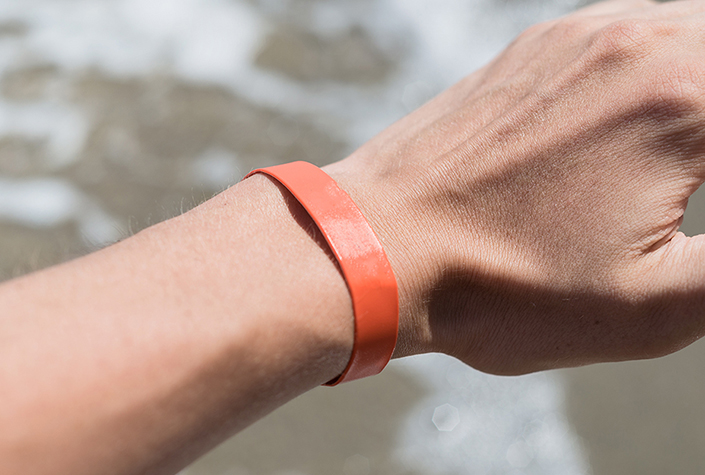Silicone wristbands: Low-cost tools for protecting expectant mothers

A study by researchers at the Texas A&M University School of Public Health shows that inexpensive and convenient devices, such as silicone wristbands, can be used to yield quantitative air quality data, which is particularly appealing for periods of susceptibility such as pregnancy.
The research team found that the silicone wristbands, when used as passive samplers, have the ability to bind smaller molecular weight semi-volatile polycyclic aromatic hydrocarbons (PAHs) in a similar pattern as active sampling.
Published recently in Nature’s Journal of Exposure Science & Environmental Epidemiology, the study focused on pregnant women in Hidalgo County in South Texas. This particular area of Texas was selected because of the heightened prevalence of childhood asthma in the region, as well as a higher prematurity rate (14.8 percent) compared to the rest of the state (12.9 percent).
The study, co-authored by Itza Mendoza-Sanchez, assistant professor in the Department of Environmental and Occupational Health (EOH) and Inyang Uwak, a recent doctoral graduate, was part of a larger maternal environmental health study led by Natalie Johnson, associate professor in EOH and Genny Carrillo, associate professor in EOH. Former EOH students Louise Myatt, Kristal A. Rychlik, Jairus C. Pulczinski, and Allison Van Cleve also took part in the research.
The study was aimed at quantifying maternal PAH exposure in pregnant women residing in McAllen, Texas. To gather the data, participants carried backpacks containing air-sampling equipment, and also had a silicone wristband attached to the backpacks. After three nonconsecutive 24-hour periods, the air-sampling equipment and wristbands were analyzed for PAHs.
PAHs are a class of chemicals that occur naturally in coal, crude oil and gasoline. PAHs are also produced when coal, oil, gas, wood, garbage and tobacco are burned. Prenatal exposure to PAHs has been shown to lead to adverse health effects in children.
“Maternal exposure to PAHs during pregnancy is particularly harmful to children’s health since this is a phase of rapid human growth and development,” Johnson said. “Thus, easy methods to quantify PAH exposure are of critical need in order to evaluate risk and develop effective intervention strategies.”
When the researchers analyzed and compared the data from the air sampling equipment and the wristbands, they found that the wristbands yielded similar results to the more traditional testing methods.

